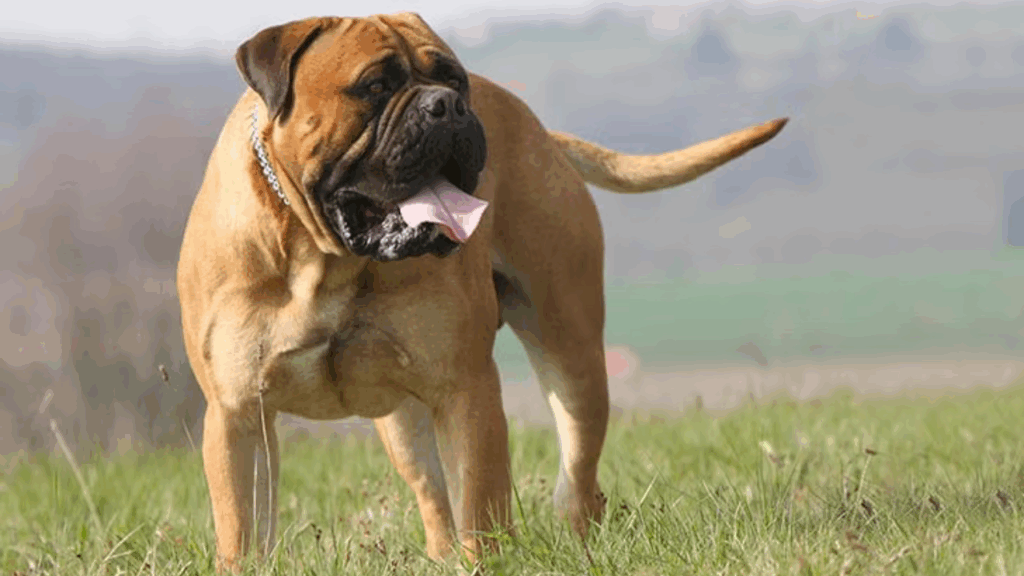The Bullmastiff is a commanding breed that blends strength, loyalty, and affection into one impressive package. Originally bred as a guard dog to protect estates from poachers, the Bullmastiff today is a loving companion, known for its devotion to family, protective instincts, and calm demeanor. With its large frame, expressive eyes, and gentle temperament, this breed is both a capable protector and a trusted friend.
Whether curled up beside you on the couch or standing watch in the yard, the Bullmastiff is a dependable and dignified presence.
Origins and History
The Bullmastiff’s history dates back to 19th-century England, where gamekeepers needed a dog to guard large estates and hunting grounds from poachers. Breeders combined the Old English Bulldog with the English Mastiff to create a dog that was both powerful and quick, yet trainable and obedient.
The result was the Bullmastiff — often called the “Gamekeeper’s Night Dog.” It was bred to track quietly, apprehend intruders without mauling them, and remain fearless in the face of danger.
Recognized by the American Kennel Club in 1934, the Bullmastiff has since become a beloved family dog, guard dog, and show competitor around the world.
Physical Characteristics
The Bullmastiff is a large, muscular, and imposing dog with a broad head and a short muzzle. Despite its size, it moves with surprising agility and grace.
Key features include:
- Height: 24 to 27 inches (at the shoulder)
- Weight: 100 to 130 pounds
- Build: Muscular, solid, and symmetrical
- Coat: Short, dense, and weather-resistant
- Colors: Fawn, red, or brindle, often with a black mask
Their physical appearance commands respect, but their calm and soulful expression reveals their gentle nature.
Temperament and Personality
Despite their intimidating look, Bullmastiffs are affectionate, loyal, and even-tempered. They are known for being particularly loving toward their families, including children, and often form strong bonds with their household members.
Personality highlights:
- Loyal and devoted – Bullmastiffs are incredibly loyal and protective of their families.
- Gentle and calm – With proper training, they are quiet and well-mannered indoors.
- Brave and confident – Naturally wary of strangers, they make excellent watchdogs.
- Independent but obedient – They’re intelligent and can be trained, though sometimes a bit stubborn.
Early socialization and consistent training are essential for this breed, especially because of their size and strength. When raised properly, they are calm and composed, even in busy or unfamiliar environments.
Exercise and Training Needs
Although Bullmastiffs are not overly energetic, they do require regular exercise to maintain a healthy weight and mindset. A couple of daily walks combined with some playtime or obedience training sessions are typically sufficient.
Exercise tips:
- Daily walks and short runs
- Interactive play in a secure yard
- Mental stimulation through training or puzzle toys
- Avoid overexertion in hot weather due to their short muzzle
Training should start early and be firm but positive. Bullmastiffs respond well to praise and rewards but do not tolerate harsh corrections. A confident, patient owner will find them willing learners.
Living with a Bullmastiff
Bullmastiffs can adapt to various living environments, including apartments, as long as their exercise needs are met. However, their large size means they need space to move comfortably indoors.
Ideal living conditions include:
- A home with a secure yard
- Owners who are home often and enjoy companionship
- Families with older children who understand dog behavior
- Consistent routines and clear boundaries
They tend to be quiet dogs and are not excessive barkers, but they are alert and will sound the alarm if something seems off.
Grooming and Maintenance
Grooming the Bullmastiff is relatively easy due to its short coat. Weekly brushing helps reduce shedding and keeps their coat healthy.
Grooming essentials:
- Weekly brushing
- Regular nail trimming
- Occasional baths
- Ear cleaning and dental care
Due to their facial folds and short muzzle, regular cleaning around the face is also recommended to prevent infections.
Health and Lifespan
Like many large breeds, Bullmastiffs can be prone to certain health issues, including:
- Hip and elbow dysplasia
- Bloat (gastric torsion)
- Cancer
- Heart conditions
- Eye problems
The average lifespan of a Bullmastiff is 7 to 10 years. Regular veterinary check-ups, a balanced diet, and appropriate exercise can help them lead healthier lives.
Is the Bullmastiff Right for You?
If you’re looking for a calm, confident, and loyal dog who can double as a loving family member and a natural guardian, the Bullmastiff might be an ideal choice. They’re not for everyone — their size, strength, and protective nature require experienced, responsible owners. But for those who can meet their needs, a Bullmastiff offers unmatched devotion and companionship.
In Summary
The Bullmastiff is a gentle giant with a guardian’s heart. Strong yet affectionate, reserved yet loving, this breed offers the perfect balance of loyalty, protection, and companionship. With proper care and training, the Bullmastiff becomes more than a pet — it becomes a treasured member of the family.

Andy Parker is a dog lover, writer, and senior editor at BarkPicks. With years of experience covering canine health, training, and gear, he helps pet parents make smarter choices for happier, healthier dogs. Andy shares his home (and heart) with two rescue pups, Charlie and Mia.



